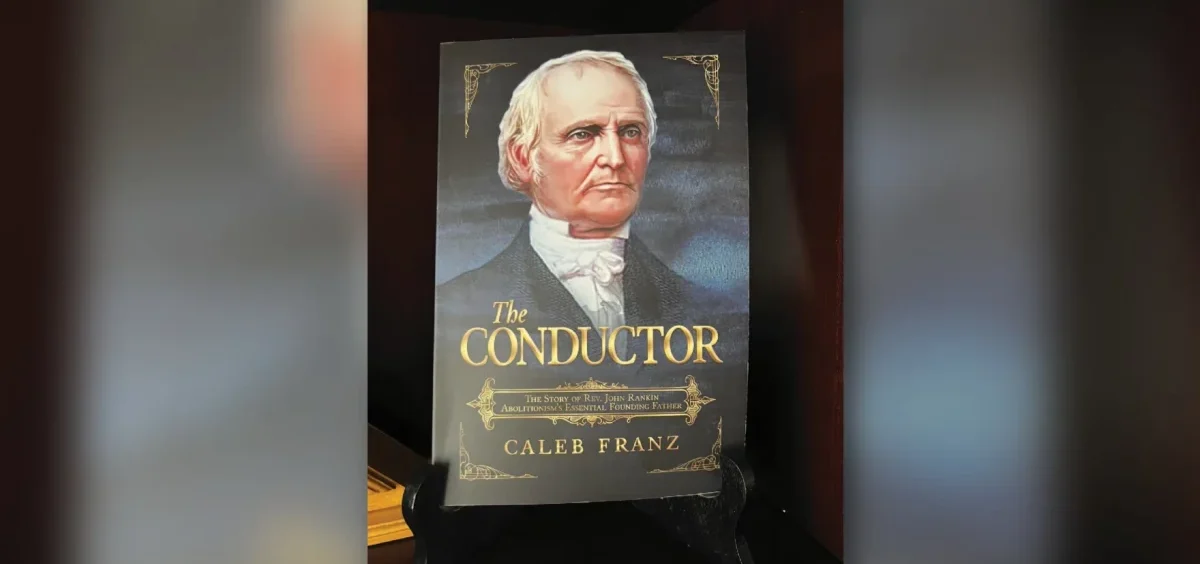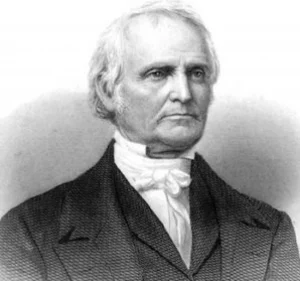News

How John Rankin, Ohio’s “father of abolitionism,” helped 2,000 people reach freedom
By: Erin Gottsacker | The Ohio Newsroom
Posted on:
CINCINNATI (The Ohio Newsroom) — When Reverend John Rankin moved to the southern Ohio town of Ripley on the banks of the Ohio River in 1822, he quickly became one of the state’s first and most active conductors on the Underground Railroad.

“I refer to him in my subtitle as the essential founding father of abolitionism,” Franz said. “That’s not because he was the first to come up with the idea of immediate emancipation or the first proponent of abolitionism. But he did make the argument through his letters on American slavery in a way that so many had never heard before, in a way that was clear and concise and digestible for all people to be able to read.”
Franz grew up in Ironton, the same southern Ohio town where Rankin died. But his knowledge of the man’s life and legacy was limited until he started researching Rankin’s role in the abolition movement.
Franz joined the Ohio Newsroom to talk about his book and what he learned.
This conversation has been lightly edited for clarity and brevity.
On how Rankin came to live in Ripley, Ohio
“John Rankin was born in eastern Tennessee, and he loved living there. His family was there. I think that it’s very safe to say that he was very happily and proudly a Southerner. But what he was not proud of was the influence that slavery had on the people and on the region. And whenever he started preaching and he started preaching against all forms of oppression, is what he referred to it as, he was faced with the choice to either continue to preach against oppression or to preach in eastern Tennessee, but he was unable to do both. So, he eventually picked up his things and said goodbye to his parents and to his family. And he made his way north to free soil where he would eventually end up in Ripley, Ohio.”
On Rankin’s station on the Underground Railroad
“After a few years living in Ripley, Rankin built a house behind the small community there. It was the lone house on the back of a hill for anyone across the river in slaveholding Kentucky to be able to identify. This included anyone who was fleeing slavery, as well as those pursuing those who were fleeing slavery, so it was kind of a double-edged sword. But Rankin was very bold in the way that he wanted everyone to be able to see. He would set a lantern in his window to identify his house as a safe house [for enslaved people] to come through and cross into freedom. And to his credit, he never lost a passenger. Over 2,000 people were able to cross through his house and into Canada.”
On Rankin’s writings
“[Rankin] really got into the anti-slavery movement after his brother wrote to him in 1823, and among other things, mentioned that he had become a slave holder. This was devastating to John Rankin. Growing up in an anti-slavery household, he felt not only that this was a betrayal of the values they had been raised in, but also a betrayal of scripture. So he set out to write a public letter campaign to his brother.
“These letters eventually became the bedrock of what we understand the anti-slavery movement to be today. They make the argument [against slavery] in a way that so many had never heard before, in a way that was clear and concise and digestible for all people to be able to read. I compare them to the Federalist Papers: the way that they made the argument for the Constitution, John Rankin’s letters on American slavery made the arguments for immediate abolitionism. And, indeed the American Anti-Slavery Society would even go on to use these letters as a textbook of sorts for newcomers to understand the moral case for immediate abolition. I think that further demonstrates the level of influence John Rankin had was not just a regional one, but rather it touched far and wide across the country to eventually influence the end of slavery.”
On Ohio’s place in the abolition movement
“Most people, for good reason, [when they] think of American history, they think of Massachusetts, Pennsylvania, Virginia, where all these major events took place. Ripley, Ohio is not something that most people would consider in all of that. But there was so much that was happening there, at the crossroads of this great struggle over slavery.
“I think the America that the founders had versus the America that we finally had with the 13th Amendment, the bridge between those two Americas can really be found in what took place there along the Ohio River and in states like Ohio and Kentucky. That’s where so much of American history took place, and I think it’s really important to understand that.”
On Rankin’s legacy
“I think that John Rankin is one of the most important American heroes that we have largely forgotten about today. I think that he certainly ranks up in the same category as someone like [William Lloyd] Garrison or [Frederick] Douglass, someone who was supremely influential in the way that they were able to contribute to the abolition of slavery.
“But also I think John Rankin provides us with certain lessons that we can take away today in our own political climate, where we see rising tensions and threats of violence. Rankin certainly lived in a time where these threats were very present, and he rose above those in a way that he did not give into violence or division. He found a way to chart a path that was in keeping with his principles, but without alienating those people that he loved.”

